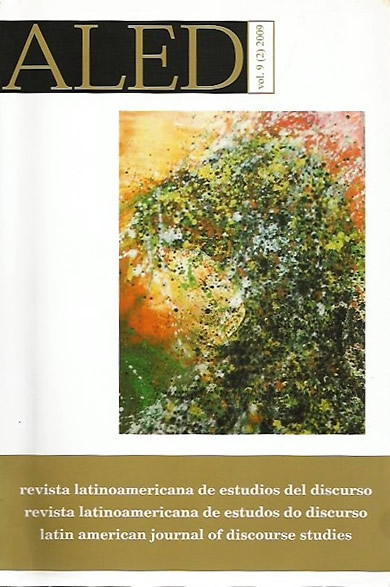O discurso sobre a gestão e a conservação da Amazônia em dois dos principais periódicos científicos internacionais
Keywords:
amazon. discourse analysis. environmental management. conservation. scientific journal.Abstract
The Amazon has been receiving growing attention from the scientific community. This is justified by its magnitude as forestry biome and complexity of ecological and social interactions, as by the emergence of environmental issues and the pressure of social movements. But how do the most read scientific journals describe the management and conservation of this region? Based on Discourse Analysis, the purpose of this article is to examine how two of the main international scientific journals (Nature and Science) present the management and conservation of the Amazon. It is observed that these journals express a utilitarian approach of the forest, simplifying processes that occur at regional scale, but are fundamental to understanding the issues related to the Amazon.
Downloads
References
Anderson, A. & Posey, D.A. (1989). Management of a Tropical Scrub Savanna by the Gorotire Kaiapó of Brazil. In: Posey, D.A.; Balée, W. (eds.) Resource management in Amazonia: indigenous and folk strategies. New York: New York Botanical Garden. p. 159-173.
Alencar, A., Nepstad, D.C., Mcgrath, D., Moutinho, P., Pacheco, P., Diaz, M. C. V. & Soares-Filho, B. (2004). Desmatamento na Amazônia: indo além da “emergência crônica”. Belém: Instituto de Pesquisa Ambiental da Amazônia.
Balée, W. (1989). The culture of Amazonian forests. In: Posey, D.A. & Balée, W. (eds.) Resource management in Amazonia: indigenous and folk strategies. New York: New York Botanical Garden. p. 1-21.
Barreto, P., Souza Jr., C., Noguerón, R., Anderson, A. & Salomão, R. (2006). Human pressure on the Brazilian Amazon forests. Belém: IMAZON; Washington: World Resources Institute.
Brasil. (1966). Lei nº 5.173, de 27 de outubro de 1966. Dispõe sobre o Plano de Valorização Econômica da Amazônia. Disponível em: <https://www.planalto.gov.br/>. Acesso em: 10 abr. 2006.
Brasil. (2008a). Ministério do Meio Ambiente. Mapa de cobertura vegetal dos biomas brasileiros. Disponível em: <http://www.mma.gov.br/index.phpido=conteudo.monta&idEstrutura=72&idMenu=3813 >. Acesso em: 05 maio 2008.
Brasil. (2008b). Plano Amazônia Sustentável: Diretrizes para o desenvolvimento sustentável da Amazônia brasileira. Brasília: MMA.
Cavalcanti-Schiel, R. (2009). A política indigenista, para além dos mitos da Segurança Nacional. Estudos Avançados, 23 (65): 149-164.
Clement, C.R. (1999). 1492 and the loss of Amazonian crop genetic resources. I. The relation between domestication and human population decline. Economic Botany, 53 (2): 88-202.
Conservation International. (2009). Biodiversity Hotspots. Disponível em: <http://www.biodiversityhotspots.org/Pages/default.aspx>. Acesso em: 20 mai 2009.
Dean, W. (1996). A ferro e fogo: A História e a Devastação da Mata Atlântica Brasileira. São Paulo: Companhia das Letras.
Denevan, W. M. (1992). The pristine myth: the landscape of the Americas in 1492. Annals of the Association of American Geographers, 82 (3): 369-385.
Diegues, A.C.S. (1996). O mito moderno da natureza intocada. São Paulo: Hu São Paulo: Hucitec.
Erickson, C.L. (2008). Amazonia: the historical ecology of a domesticated landscape. In: Silverman, H. & Isbell, W. (eds.) Handbook of South American Archaeology. New York: Springer.chap. 11, p. 157-183.
Fairclough, N. (2001). Discurso e mudança social. Trad. Izabel Magalhães. Brasília: Editora Universidade de Brasília.
Fearnside, P. M. (1997). Greenhouse gases from deforestation in Brazilian Amazonia: Net committed emissions. Climatic Change, 35 (1): 321-360.
Ferreira, M.C.L. (2006). Análise do discurso no Brasil: notas à sua história. Grupo de Pesquisa em Estudos do Discurso. Instituto de Letras/UFRG. Disponível em: <http://www.discurso.ufrgs.br/>. Acesso em: 17 jul 2009.
Food and Agriculture Organization of the United Nations (FAO). (2009). State of the world’s forests. Roma: FAO.
Heckenberger, M.J., Russel, J.C., Toney, J.R. & Schmidt, M.J. (2007). The legacy of cultural landscapes in the Brazilian Amazon: implications for
biodiversity. Philosophical Transactions of the Royal Society B, 362 (1478): 197-208.
Instituto Brasileiro de Geografia e Estatística (IBGE). (2004). Indicadores de Desenvolvimento Sustentável ”“ Brasil 2004. Rio de Janeiro: IBGE.
Instituto Nacional de Pesquisas Espaciais (INPE). (2008). Monitoramento Ambiental da Amazônia por Satélite. Projeto PRODES. Disponível em: <http://www.obt.inpe.br/prodes/prodes_1988_2005.htm>. Acesso em: 02 abr. 2008.
Klink, C. A. & Machado, R. B. (2005). A Conservação do Cerrado Brasileiro. Megadiversidade,1 (1):147-155.
Leff, E. (2001). Saber Ambiental. 3ª Ed. Petrópolis: Vozes.
Lui, G.H. & Molina, S.M.G. (2009). Ocupação humana e transformação das paisagens na Amazônia brasileira. Amazônica, 1 (1): 200-228.
Magalhães, I. (2005). Introdução: A Análise de Discurso Crítica. D.E.L.T.A., 21 (n. esp.): 1-9.
Margulis, S. (2003). Causas do desmatamento da Amazônia Brasileira. Brasília: Banco Mundial.
Moutinho, P. & Schwartzman, S. (2005). Tropical Deforestation and Climate Change. Belém: Instituto de Pesquisa Ambiental da Amazônia (IPAM).
Nature. (2009). About the journal. Disponível em: <http://www.nature.com/nature/about/>. Acesso em: 14 jul 2009.
Orlandi, E.L.P. (2000). Análise de discurso: princípios e procedimentos. 2 ed. Campinas: Pontes.
Resende, V.M & Ramalho, V. (2006). Análise de discurso crítica. São Paulo: Contexto.
Science. (2009). About AAAS. Disponível em: <http://www.aaas.org/aboutaaas/>. Acesso em: 14 jul 2009.
Strehl, L. (2005). O fato de impacto do ISI e a avaliação da produção científica: aspectos conceituais e metodológicos. Ciência da Informação, 34 (1): 19-27.
Van Dijk, T.A. (2008a). Discurso e poder. São Paulo: Contexto.
Van Dijk, T.A. (2008b). Racismo e discurso na América Latina. São Paulo: Contexto.
Downloads
Published
How to Cite
Issue
Section
License

This work is licensed under a Creative Commons Attribution-NonCommercial-NoDerivatives 4.0 International License.
The authors retain the copyright and guarantee RALED the right to be the first publication of the work as well as a Creative Commons Attribution License that allows others to share the work with recognition of authorship and the initial publication in this journal.




